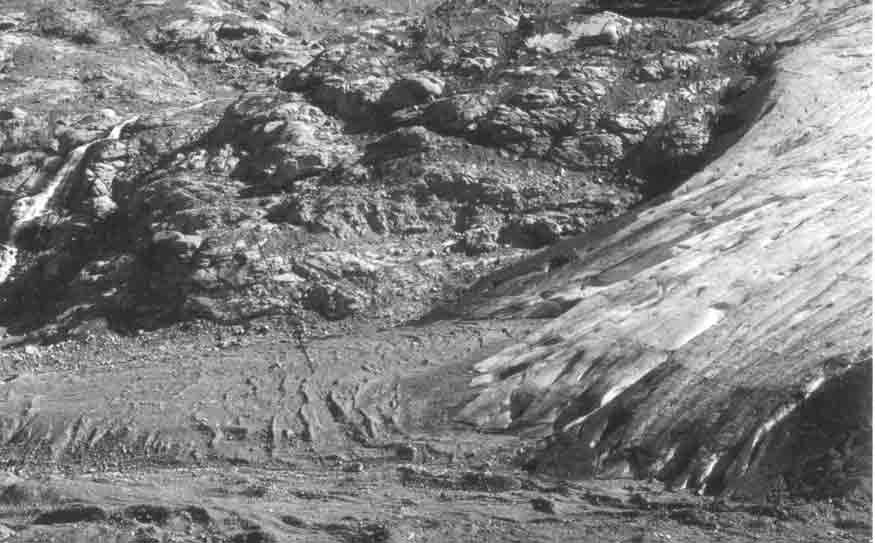A historic year for us — it is the 40th anniversary of monitoring Wedgemount Glacier. Much has changed in those four decades.
In 1973, the glacier was floating on the lake; by 1991 the glacier terminus was back to the lakeshore. Then it began receding upslope, fast, and a minor bedrock ridge (called a riegel) was exposed. A second, bigger riegel was exposed soon after, and in the last few years an ice cave with a small pond developed at the terminus behind the bigger riegel, the terminus now being almost 300 metres from the lakeshore. It's on a roll, except it's in the wrong direction, and the recession over the last year between monitoring was a near record — 28.6 metres. In the 1930s it was more, but in our period of measurements it is a record loss, and since 1991 the average recession has been 13.6 metres per year.
Well, did we ever witness an advance of the glacier? The answer is yes, in 1981, but less than one metre!
For Overlord Glacier the news is good, a slight 1.9-metre advance over the last year, thanks to copious rock debris on the snout of the glacier to retard melting. Its other terminus (there are two side by side, but this one is of much less significance) lost 6.2 metres since 2010. Last year we could not measure it because the slow summer melt of snow in 2011 left a disguising/masking bank of snow at its terminus.
This brings up another point. In early July of this year, the hefty blanket of snow on our mountains led to many pundits predicting that there would be residual snow on our glaciers, sure to bring on a reduction in the recession. Well, by September the lower reaches of our glaciers had lost all residual snow cover and, with a minor exception due to rock debris cover, the glaciers thinned and retracted.
In my walk over the Musical Bumps to Russet Lake in early September there were only two very small snow patches on the trail, and the snow banks around the lake were small compared to previous years. Yes, August was a hot spell that sucked up that abnormally late spring snow cover, as shown by the high water levels on Green Lake.
The question remains: why was the recession Overlord experienced so miniscule compared to Wedgemount? Perhaps the record snowpack of the winter of 1999 may be the answer. It has finally moved down glacier to provide the extra "oomph" at the terminus. And why is Wedgemount receding so rapidly, being the highest glacier in the area and on the north side of 2,906-metre high Wedge Mountain? I don't know — it may be the mountain itself is providing a local "rain shadow," that is, the leeward effect.
Any other ideas?




